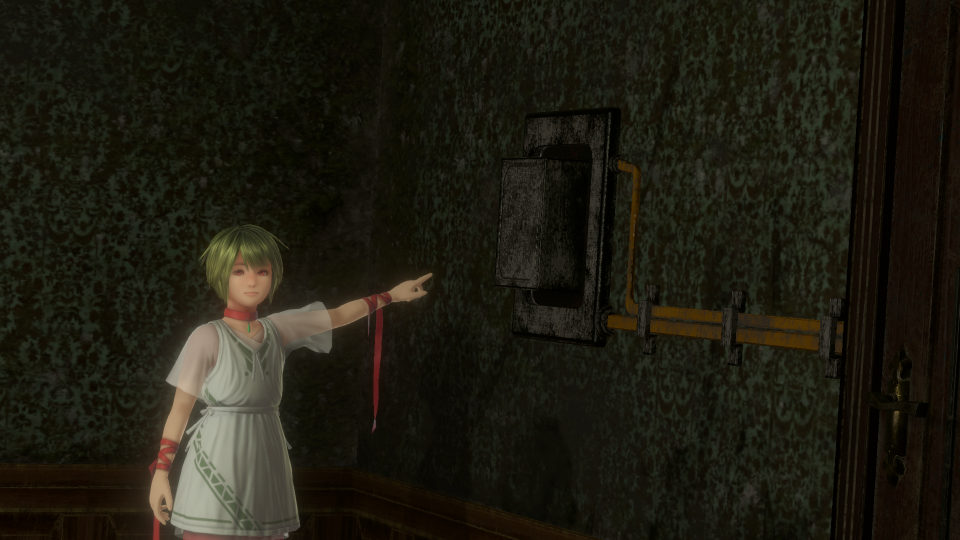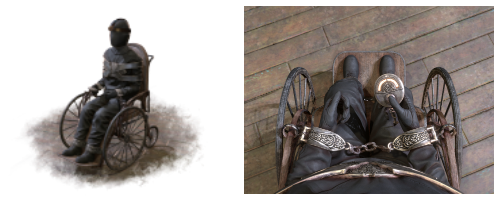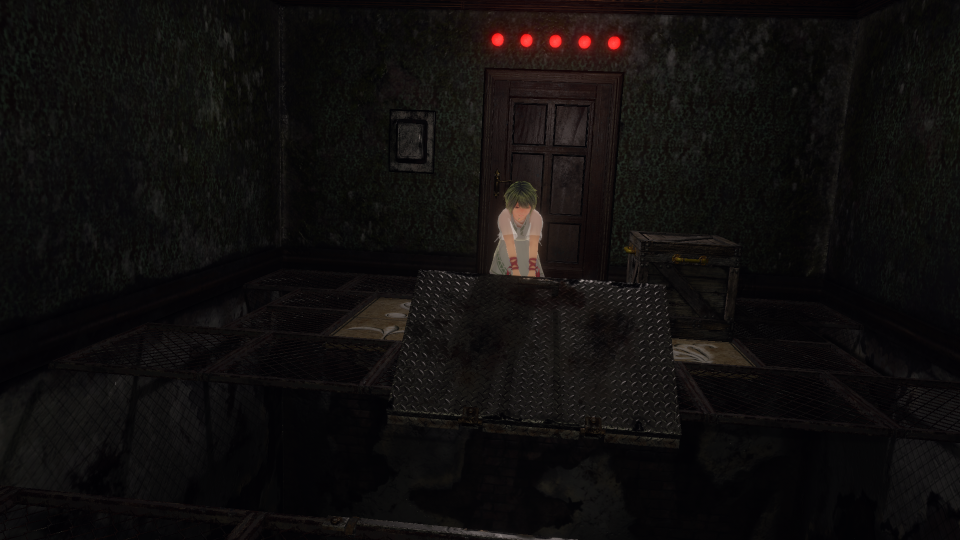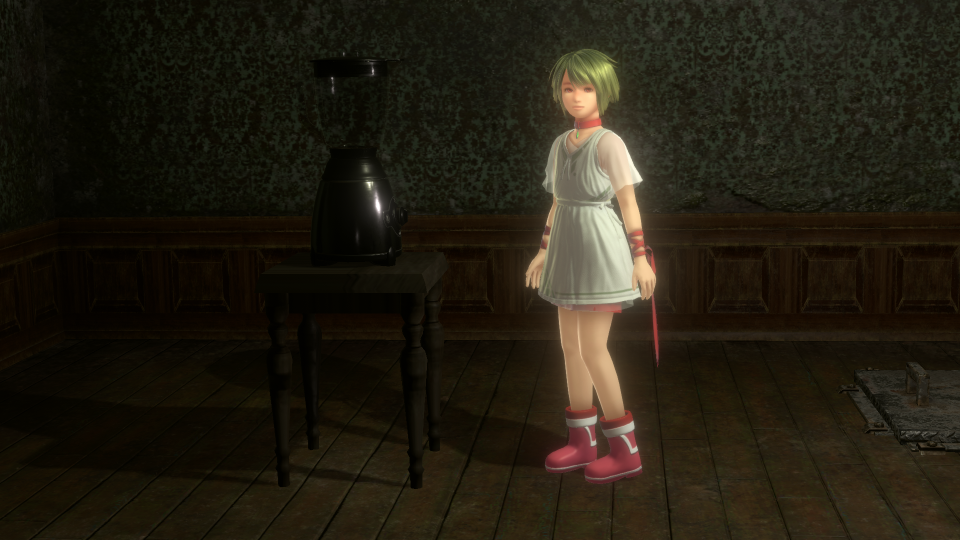Hi everyone!
In our previous entry, we said that this blog would be where we would post interviews, semi-regular updates, and extra tidbits about Last Labyrinth that didn’t make it onto our regular social media posts. After a long wait, we can finally give you the first of many updates to come!
Today we have an interview with the director/producer of Last Labyrinth, Hiromichi Takahashi! Read on to learn more about how this game came to be, the challenges of making a VR title, and other background info as our marketing lead, AT, interviews the man himself.
Are there any particular challenges that come with making a VR game like Last Labyrinth?
One thing we struggled a lot with is how easy it is for something to feel off in VR, even for small stuff like character movements or background models. People tend to become very sensitive to irregularities when entering a VR environment, so they will suddenly notice things in VR that they may have otherwise overlooked in a 2D medium like a PC or console game. In Last Labyrinth you are constantly looking at Katia, so we ran into this issue often, and as a result the level of detail that was required when it came to character animations was much higher than what we originally assumed, and that set the bar really high. Of course, I was the one who chose to go with this platform and designed the game this way, so, really, I only have myself to blame.
So because Katia acts on behalf of the player, more animation and visual detail became necessary to not hurt immersion?
Yes. For example, in a game where you control your own character, you don’t spend all your time staring at your own movements; you’re looking at your next location or your enemies while you control your character, and you don’t really spend that much time staring at a particular character and every move they make. Come to think of it, Last Labyrinth might be one of the surprisingly few games where you constantly look at the characters.

That is true. So why did you decide to restrain the player to a wheelchair and make it so they have to constantly look at Katia? You could say it’s pretty rare to have a VR game where the player can’t move at all.

That was a result of several ideas I had when we were coming up with the concept for Last Labyrinth.
When we first started thinking about the design of the game around the end of 2015 to mid-2016, I went to a lot of VR meetups, and tried out some of the VR games that other companies were putting out. There was some pretty interesting stuff, but I often felt like you couldn’t quite get that full sense of immersion even though it was in the VR medium.
When I thought about why I felt that way, the reason seemed to be that the controls in those VR games might have been too complicated. Like, partway through the experience you’d be thinking “Wait, how am I supposed to move again?” and “How do I grab that object in front of me?”, and your focus would then be on figuring out the controls instead.
Some of the VR titles had voice assistance where somebody would tell you, “Look at the X to your right,” or “Pull the lever to trigger Y,” through an outside mike, and I thought, you’re inside this VR environment, and yet because of the confusing settings and controls, you wind up taking too long to get fully immersed. This seemed like a missed opportunity to me,so I figured that we could solve it by keeping the controls simple.
Another thing we considered was that we wanted to have it on the PlayStation®VR on top of having it on the Rift and Vive, and according to the PlayStation®VR guidelines, they recommended that players sit while playing to prevent accidents. The Oculus Touch wasn’t out at the time, so they generally encouraged seated play, too. Since seated play was recommended, we thought that maybe we could just design the game to be played while seated right from the start.
Keeping the controls simple and seated play became the two driving factors behind the design philosophy of the game, and they ultimately lead to the game’s current design with the player seated and stationary while playing.
If you think about it that way, had the PlayStation®VR or Oculus Rift guidelines suggested that players should play while standing, this game might have turned out to be one that you played while standing (haha). If we had made it a VIVE exclusive title, it wouldn’t be played sitting down, either.
However, because of this game design, you can reach a high level of immersion within a short amount of playtime, and we’ve had players tell us that they were able to get right into it, so I think this design wound up being a great choice for Last Labyrinth.
Was there anything about Katia that you paid particular attention to?

Her presence as a character, her personality, and her aura that makes you feel like she really exists; these were the things that we were extremely particular about. We relied on layers upon layers of actions through her animations to achieve that sense of presence. Fukuyama (Lead Animator) refers to it as “her sense of innocence” (haha), and I guess it’s something like that.
We designed her character to feel like she’s actively trying her best to help the player, but it’s not like she’s actually capable of doing everything. I mean, if she was some kind of muscle-bound macho guy, you’d probably go “well, can’t you just smash through that?” when it comes to certain puzzles, right?
That does make sense! “Can’t you just leap over that?” would be something that players might think (haha).
Exactly. “He could probably pick that up with one hand” would be running through the minds of players.
By the way, since the PlayStation®VR and Oculus Rift/Steam VR guidelines state 12 and 13 as their minimum age limits respectively, we designed Katia’s character to look slightly younger than that. We wanted her to look a little weak even in the eyes of 12 or 13-year-olds.

Then let’s talk a bit more about Katia. Why did you go with that particular hair color for her?
That was because we wanted to have that Japanese anime aesthetic in the game. We wanted people to realize right away that it’s a title from a Japanese game studio. I doubt players around the world would be expecting a realistic looking female character, like Ellie from The Last of Us, from a Japanese game studio. On the more practical side of things, there’s also the fact that we’re still a small team, so we wouldn’t have the budget nor the time to create a photorealistic model anyway.
And that’s the reason you chose to go with the Japanese anime look.
Right. There was also the fact that we wanted her character to be the “icon” for the game. Short, green hair, red eyes, a white dress, and pink boots—it makes for a very iconic look, and you’ll know it’s Katia right away. If we had gone the other way and made a realistic-looking character, it’d be much harder to stand out and be recognized, and that’s also why we purposely chose the anime style.

I see! There’s still plenty more that we’d like to hear about, but that will be all for now. Thank you very much!
And with that, our first interview post comes to an end!
I’m sure many of you still have things you’d like to ask, so feel free to leave a comment with your questions, and we’ll have Mr. Takahashi respond to them in a future interview!
*1 The Last of Us: An action-adventure survival horror title, released for the PlayStation®3 in 2013. A HD remastered version for the PlayStation®4 was released the following year in 2014. Recipient of over 200 gaming awards from around the world.

